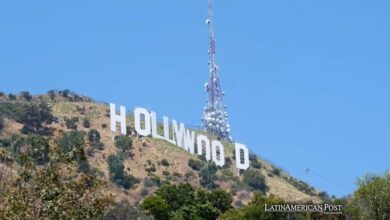NASA Seeks Space Collaboration on Mexican Visit

NASA’s chief, Bill Nelson, is in Mexico City forging alliances to enhance space cooperation, marking a significant stride in bilateral space and educational agendas between the U.S. and Mexico.
Bill Nelson, the United States National Aeronautics and Space Administration (NASA) Administrator, has embarked on a critical visit to Mexico City. The visit, aimed at bolstering space cooperation between the U.S. and Mexico, underscores a pivotal moment for international space collaboration in Latin America.
Strengthening International Bonds
Accompanied by NASA Deputy Administrator Pamela Melroy and U.S. Ambassador to Mexico Ken Salazar, Nelson’s agenda is packed with high-profile meetings aimed at strengthening ties and fostering innovation both in orbit and on the ground. This visit not only signifies a continuation of NASA’s commitment to international partnerships but also highlights Latin America’s growing importance in the global space community.
The visit started with an announcement on social media platform X, where Nelson shared an image with Melroy and Salazar, signaling the start of their engagements. “This week, @Astro_Pam and I are here to meet with government officials and strengthen our partnership and innovation in space and here on Earth,” Nelson tweeted, setting a collaborative tone for the visit.
Mexico’s Senate heightened expectations by disclosing plans for a “high-level meeting” with Nelson to discuss expanding the two nations’ educational and space cooperation agenda. Additionally, they are set to discuss a constitutional reform that would prioritize space activities as a national development area for Mexico. This move could redefine the country’s scientific and technological landscape.
Scientific Dialogue
Simultaneously, the prestigious Universidad Nacional Autónoma de México (UNAM) hosted a virtual meeting between Nelson and the scientific community, which included participants from the Instituto Politécnico Nacional (IPN) and the Agencia Espacial Mexicana (AEM). This interaction provided a platform for dialogue on potential collaborative projects and scientific exchanges that could propel Mexican space endeavors to new heights.
Nelson’s itinerary also suggests discussions with President Andrés Manuel López Obrador and other high-ranking officials. This could lead to significant bilateral agreements or announcements enhancing the existing cooperation framework between NASA and its Mexican counterparts.
This visit is timely following NASA’s expressed interest in the total solar eclipse observed from Mazatlán, a coastal city in the Pacific region of Mexico. This event, which provided optimal viewing conditions, symbolizes the scientific opportunities that natural phenomena offer for international research and cooperation.
The cultural aspect of Nelson’s visit was also highlighted by Ambassador Salazar’s social media posts, showing the NASA chief exploring the historic Coyoacán neighborhood, a cultural hub in the south-central part of the capital. Their visit to landmarks like the San Juan Bautista parish and the iconic Fuente de los Coyotes not only emphasizes the deep cultural appreciation and respect that accompanies diplomatic visits but also showcases the unique cultural heritage of Mexico City.
Bilateral Agreements
Nelson’s visit reflects a broader trend: Latin American countries are increasingly recognized as vital partners in global space exploration efforts. Countries like Brazil, Argentina, and Chile have also made significant strides in space technology, making the region a critical player on the global stage.
The implications of strengthened U.S.-Mexico space relations extend beyond diplomacy and science. They are likely to influence educational initiatives, technological exchanges, and even economic opportunities, particularly in regions of Mexico that could host cooperative space projects. The potential for job creation and technology transfer presents a promising horizon for Mexico’s burgeoning space sector.
Moreover, this tour could set a precedent for future collaboration between the U.S. and Mexico and involve other Latin American nations keen on developing their space capabilities. As countries in the region continue to advance their technological and scientific infrastructures, partnerships like those forged between NASA and Mexico will play a crucial role in defining the scope and trajectory of Latin America’s space ambitions.
Also read: Mexico Issues New Epidemiological Alert for Measles Virus Spread
As Bill Nelson’s visit continues to unfold, the eyes of the world, especially those of the international space community, will be on Mexico City. The outcomes of this tour determine the future of space exploration and cooperation in Latin America, marking a new era of interstellar partnership that bridges nations through shared ambitions and collective endeavors in the final frontier.




